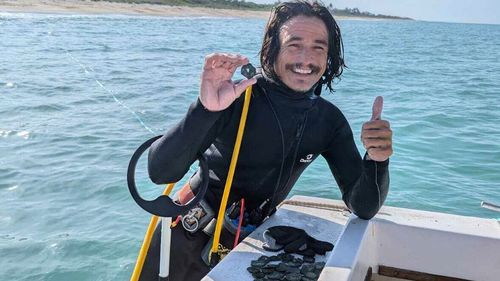Share this @internewscast.com
Hidden below the turquoise waters along Florida’s “Treasure Coast,” a team of divers from a shipwreck salvage company has discovered exactly that — a trove of long-lost Spanish treasure they value at US$1 million (A$1.5 million).
This summer, over 1,000 silver and gold coins, believed to have been minted in Spanish colonies like Bolivia, Mexico, and Peru, were found off Florida’s Atlantic coast, as announced by 1715 Fleet – Queens Jewels LLC this week.
It’s not the first time the site has yielded a trove of, well, treasure.

Centuries back, a convoy of Spanish ships carrying gold, silver, and jewels from the New World was en route to Spain when a hurricane destroyed the fleet on July 31, 1715, scattering the treasures into the ocean, according to the 1715 Fleet Society.
Throughout the years, salvagers and treasure hunters have uncovered millions in gold coins from the 1715 Fleet along a coastal region that stretches from Melbourne to Fort Pierce.
According to the salvage company, some of the coins recovered recently still show dates and mint marks, offering valuable insights for historians and collectors eager to learn more about the lost treasure.
“This discovery is not just about the treasure itself, but the stories it unveils,” said Sal Guttuso, director of operations for the salvage company, in a statement.
“Each coin is a piece of history, a tangible link to the people who lived, worked, and sailed during the Golden Age of the Spanish Empire. Finding 1,000 of them in a single recovery is both rare and extraordinary.”
Guttuso’s team employs dive crews and a fleet of boats and uses underwater metal detection-devices, plus hand-fanning of sand or sand suction to comb the sea floor, according to a public notice for a federal permit application the company filed.
Last year, Florida officials announced they had recovered dozens of gold coins stolen by salvagers from the wreck. The suspect was identified as a family member of the team contracted by 1715 Fleet – Queens Jewels LLC to work the site.

Divers find 100 bottles of ‘royal’ champagne on shipwreck
Under Florida law, any “treasure trove” or other historic artifacts “abandoned” on state-owned lands or in state waters belong to the state, though excavators can be permitted to carry out “recovery services.”
The law requires that roughly 20 percent of the recovered archaeological materials be retained by the state for research collections or public display.
Guttuso told The Associated Press his team develops a detailed inventory of all the artifacts collected each season to be reviewed by the state.
Florida officials select up to 20 percent of the items to keep for the public, in a negotiation process that is ultimately approved by a federal court. Remaining artifacts are split equally among the salvage company’s owners and its subcontractors, Guttuso said.
“We want to do it right,” Guttuso said.
“And it benefits the people of Florida. They end up in the museums,” he said of the treasures.










